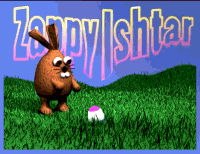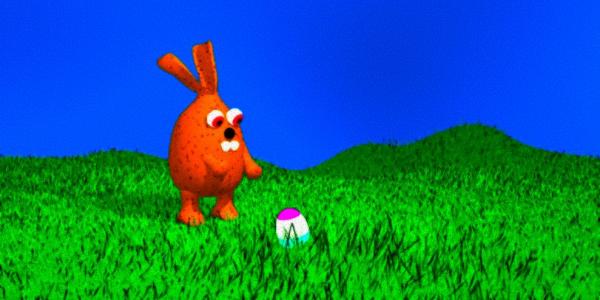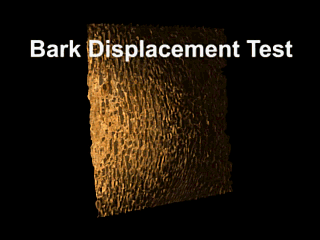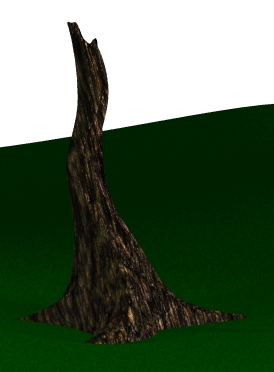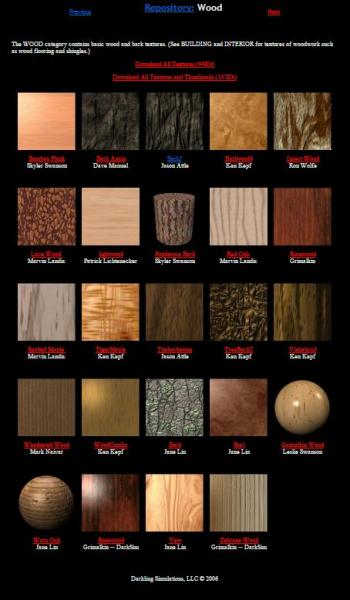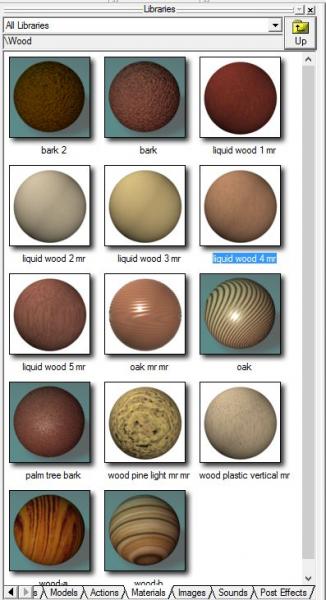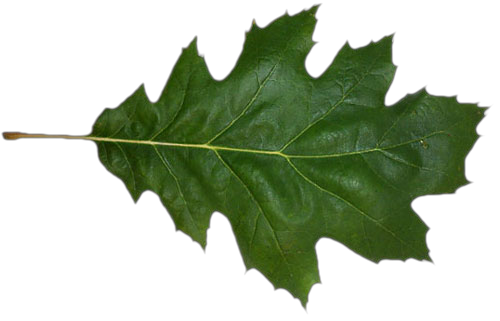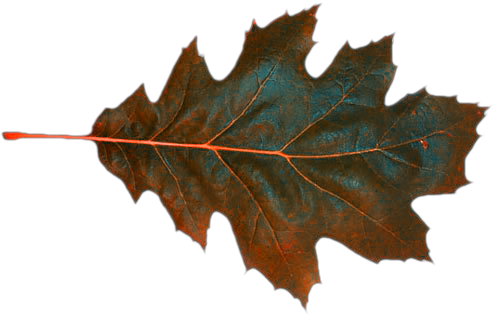-
Posts
21,649 -
Joined
-
Last visited
-
Days Won
119
Content Type
Profiles
Forums
Events
Everything posted by Rodney
-
That's a great cast of characters Will. Exciting times!
- 47 replies
-
- Tar of Zandoria
- Concept art
-
(and 1 more)
Tagged with:
-
-
If it has been said once it's been said a thousand times... 'one should only reluctantly open a file named weirdbunny.zip'. Cute critter John! Here's my quick take on him.
-
I admire your enthusiasm Douglas. The absolute best thing these folks can do is take the plunge, get involved in the A:M Community and start using the program. They will find kindred spirits here in the forum, peers, friends and mentors too. But... there is only so much one can do with someone who hasn't used a program. Our collective focus is (and I believe really only can be) upon those that frequent this forum. Aside: Don't let the fluke of your WIP topic disappearing dissuade you from starting a new post in the WIP section on any project (i.e. requesting a drawing that you will attempt to model). The loss of three topics (out of thousands) in recent past is very unfortunate (especially when one of them is your own!) but it's also such a rare thing you shouldn't use that as an excuse for not posting whatever project you want commented on in the WIP forum. I personally think those topics can be brought back but to see that happen I believe we'd need to open some type of trouble ticket with Jason to get it on his radar as backups/restorations are at the server level.
-
Thanks guys. Yes, cost will be a consideration (as it always is) although the university in question might have funds to support such through grants etc. This is only one of several apps vying for support (but the ony one I'm involved in and as far as I know the only one that will be a game app) and I would guess the initial foray will be with currently available resources, open source, etc. Torque... almost makes the grade. I'd imagine it could be used to create an initial game that they would be recreated for Android devices should they target that platform. Builfbox... if they'd be willing to fun the development at that level that'd be a nice way to go.
-
Smooooooth.
-
Hey, I like those hands. They have a really nice stylistic look. The kind like one might see in 'The Incredibles' or a Disney film which I often find appealing. My primary critique would be that the width of the wrists seems a bit large in comparison to the hands... almost makes the hands look like gloves. You are really starting to get a hand-le on this splining thing. Keep it up! Added: After seeing your posts/updates on your 'foots/feets' I started to wonder about best practices for rigging them!
-
Ah, thanks for refreshing our memories on that one. I recall being confused by that before.
-
I know at least two of the characters are available... the third may be accessible too via archive.org. Standby... I believe these are uploaded in the A:M Exchange Models area but here they are again just in case they aren't: (I don't recall Blue Dude ever being shared... it's not on Jeff Lew's old site) Note that the attached were optimal for v10.5 and any subsequent modifications won't be included. greendude_AM.zip yellowdude_AM.zip
-
I believe Matt Campbell (aka John Bigboote) is the creator of the Fisheye Lens, although it may have been modified and updated (or even included in the Techno Crane Camera rig as I recall it may have been added there). https://www.hash.com/forums/index.php?showtopic=36755&hl=fisheye ...and HERE IS A DIRECT LINK to Matt's documentation on the Fish Eye Lens. Correct me if I'm wrong Tom!
-
I like it!
-
The absolute easiest way to create a foot is to open a model with a foot and copy/paste the desired foot into a new model window. Actually, that may be the second easiest way. The first would be to borrow a foot from someone else. Here's a foot that I believe has made the rounds on quite a few characters (this one came from the Hulk which might explain its lack of feminine characteristic) It's old and the topology might not be entirely ideal but it is likely to be recognizable as a foot to most people. And where it comes to modeling a foot from scratch it can be beneficial to study how others have approached it in their work. Edit: Nice video Gerald! Foot.mdl
-
I visited the cinder links and got lost for awhile this morning watching videos... very interesting. Then I got sidetracked by the lock-free programming (atomic weapons) videos as those were really fascinating to me conceptually... not that I'd have a clue as to how to incorporate any of that into a project. I'm definitely planning to use javascript/html to create a mockup/demo of the game to zero in on graphics, test spritesheets, etc. A lot will solidify once 1) the official decision to support/pass on the project is made 2) a programmer gets involved. We are a few weeks out of knowing if the project is green lit. Thanks Yves for the recommendations. Even if not used in this project I'll be looking deeper into cinder (I've been listening to more videos related to cinder while typing this).
-
There are many advantages to rendering to images sequences rather than movie formats. As for free solutions... you can launch the 32bit version of A:M side by side with the 64 bit version and use a number of methods to transfer sequential images to movie files. The easiest of which is to use the 'Save As Animation' option to quickly make the transfer. A few of the benefits to rendering to image sequences: - Saves memory - Prevents losing the entire render should something go wrong (if something does interupt the render all we have to do is pick up where the last image in the sequence left off). - Better compositing - Use of the individual images for things other than the final movie And more that I'm not currently thinking of... I've been using the free (and very powerful) Black Magic Fusion which makes short work of image sequences. It has a number of useful feature related to that such as supplying the number of image in the sequence right from the opening dialogue. Fusion is a node based compositor but with two nodes (an input and an output) you've just added another renderer to A:M. Make the output just about any format you want. Need a Quicktime movie? No problem. Perhaps even better, Fusion has a render manager so that you can set up and rerender on the fly in the background. This might not seem to handy until you realize that all you have to do in A:M is replace an image anywhere in a sequence and then launch Fusion to update the final product. Of course the power of Fusion goes way beyond that but for easily cropping images, adding text and effects... it's hard to beat tools used by Hollywood. I'm not trying to promote Fusion though but I am trying to promote rendering to image sequences. I often switch back and forth between 32bit and 64bit versions of A:M because while one is rendering I can work in the other. One thing you don't want to do if you can help it is renderer the same frames from A:M unnecessrily as that will slow down production considerably. Rendering to image sequences is the first and best means of leveraging your renders and outputting them to anything you want.
-
Yes, the 64bit version does render so we need a little more information here.
-
Clash of Clans... entriely different property. I haven't seen either except in the extract (behind the scenes/fx breakdowns etc.) Come to think of it... it might be more appropriate if Game of Thrones was called Clash of Clans and Clash of Clans was named Game of Thrones.
-
I think so. I'll have to investigate.
-
Steve got me thinking about approaches to tree bark and this was the result of applying a displacement map to a 9 patch grid. For bark I note that in addition to the texture, lighting has a great deal to do with emphasizing that bark's detail and hardness.
-
For those that want to see how many of these materials look on basic shapes/objects the pixelburg materials test site is still operational: http://www.pixelburg.com/am_materialtest/darktrees_repository/index.html http://www.pixelburg.com/am_materialtest/darktrees_repository/display_tx_Wood_Wood_Bark.html
-
I hadn't used Darktree in so long I thought I should run through the process again and here's a quick render of the results. Because materials tend to stick to objects in less than ideal angles it can help to first apply the material and then reshape the object to get more ideal results. For instance, the pattern of of the bark on the roots of a tree shouldn't be of the same angle as that of the trunk. I didn't take time to resolve any of that in this render.
-
If you want to go the Darktree Simbiont route there are some really nice bark materials in that collection: http://www.darksim.com/Repository/tx_Wood/ You could also render those out on a proxy model and then use the texture image generated from that as decal etc.
-
Steve, you asked about bark material... There are two bark materials in the Materials Library (there should be four... not sure what became of the other two... but the other two are variations on one of the two so that might be why they aren't there). (They are rather understated so will likely need adjustment and/or another version of the material overlaid as displacement or bump). The two materials are the first two materials in the Wood category. (See attached image) I see Jeetman (George Dugas) uploaded a tree model with a more pronounced bark in this topic (as an assist to Gene in one of his projects): https://www.hash.com/forums/index.php?showtopic=35480&page=1&do=findComment&comment=303290
-

Just playing with extra cd files in library
Rodney replied to johnl3d's topic in Tinkering Gnome's Workshop
Nice one John! I'm not sure how old he is but I'm pretty sure that guy is one of the many characters contributed by the legendary Alain Desrochers. The characters name was 'Cameleon' and originally made available via Al's Archives. Al's models from that archive were modified, rerigged and incorporated into the Extras CD. -
Not that you need the leaf with alpha channel but just in case you do... here is the leaf w/ alpha in exr, png and tga format. For changing of season/color one could adjust the ambiance color and intensity and get pretty much any color. Edit: For the heck of it I added an altered color (dying leaf of autumn) version. leaf0000.exr leaf0000.tga
-

Keith Lango Video Tutorial last chance closeout firesale
Rodney replied to robcat2075's topic in Open Forum
That's a great deal. I need to dust off my copies and review them again. It's sad in a way, to think these lessons won't be available again. Perhaps in the future Keith will donate the videos to the public domain... if nothing else they'd be great content for video editors to work through... picking all their favorite tips and tricks. Every once in awhile something like this happens on the internet and it makes one wonder about the longevity of digital goods and services. Keith should contact one of those mass-content video tutorial services and see if they'd pay a little for the series. Ah well, it was good while it lasted.









